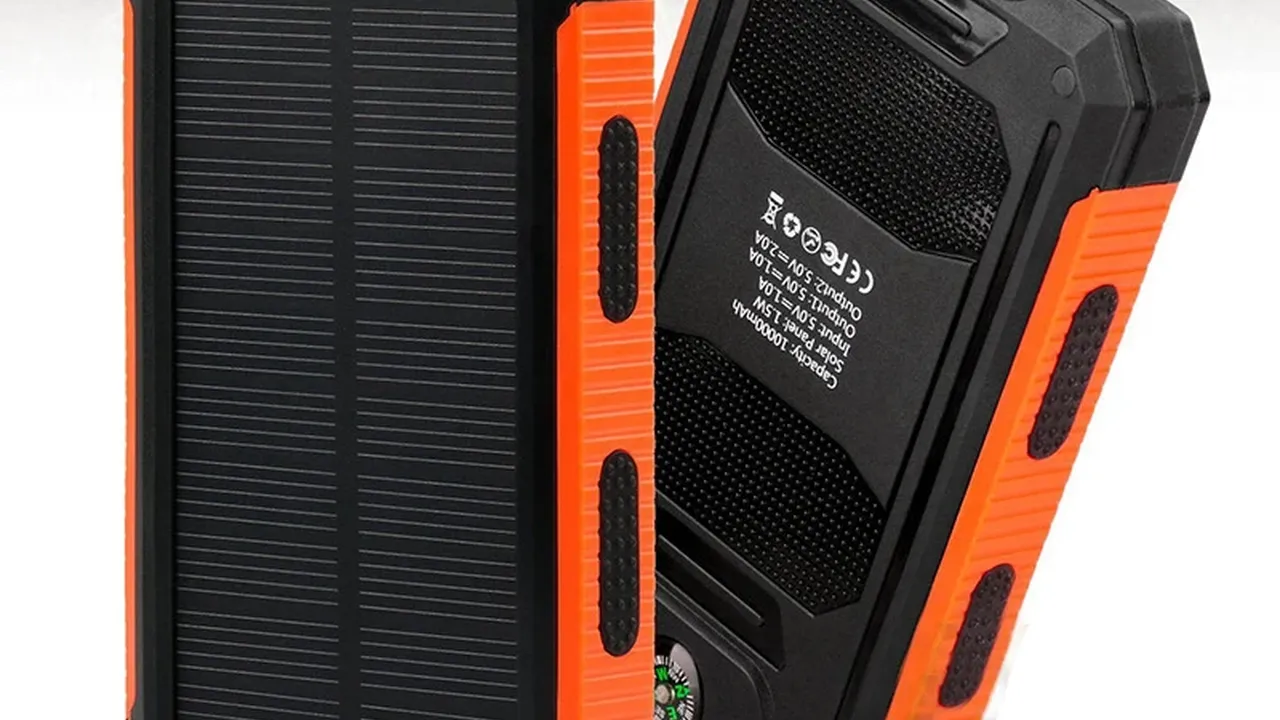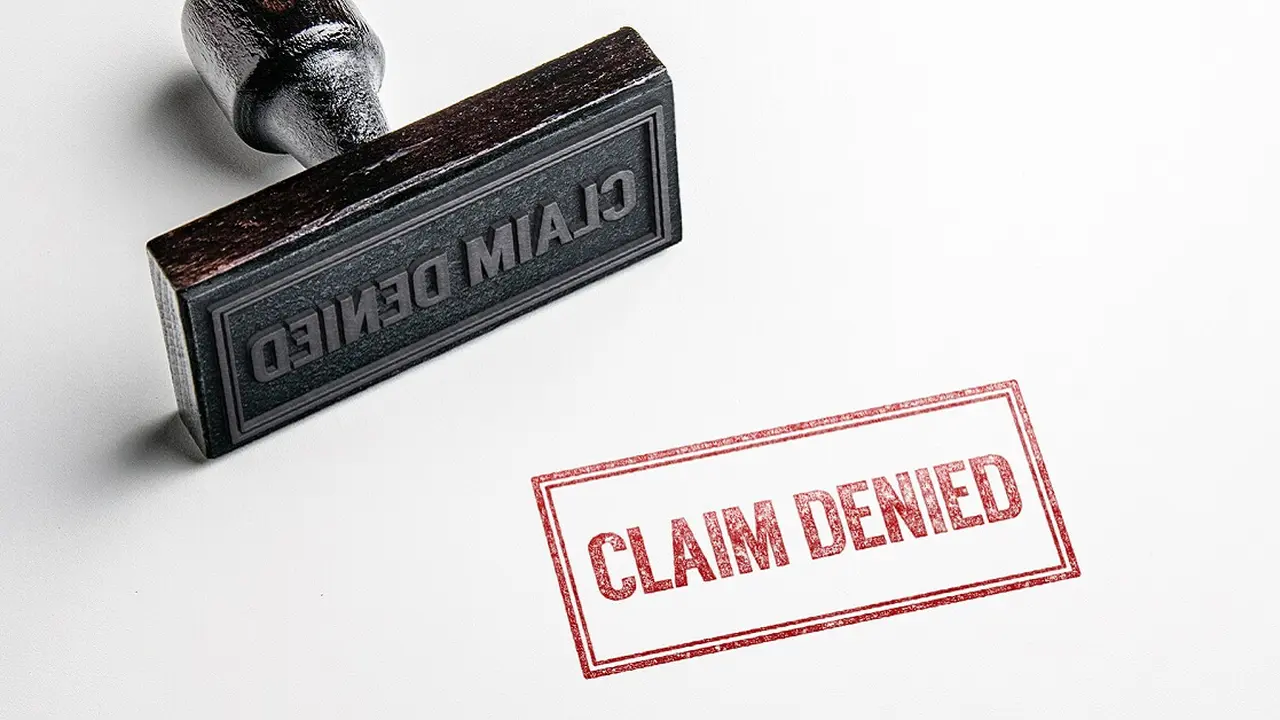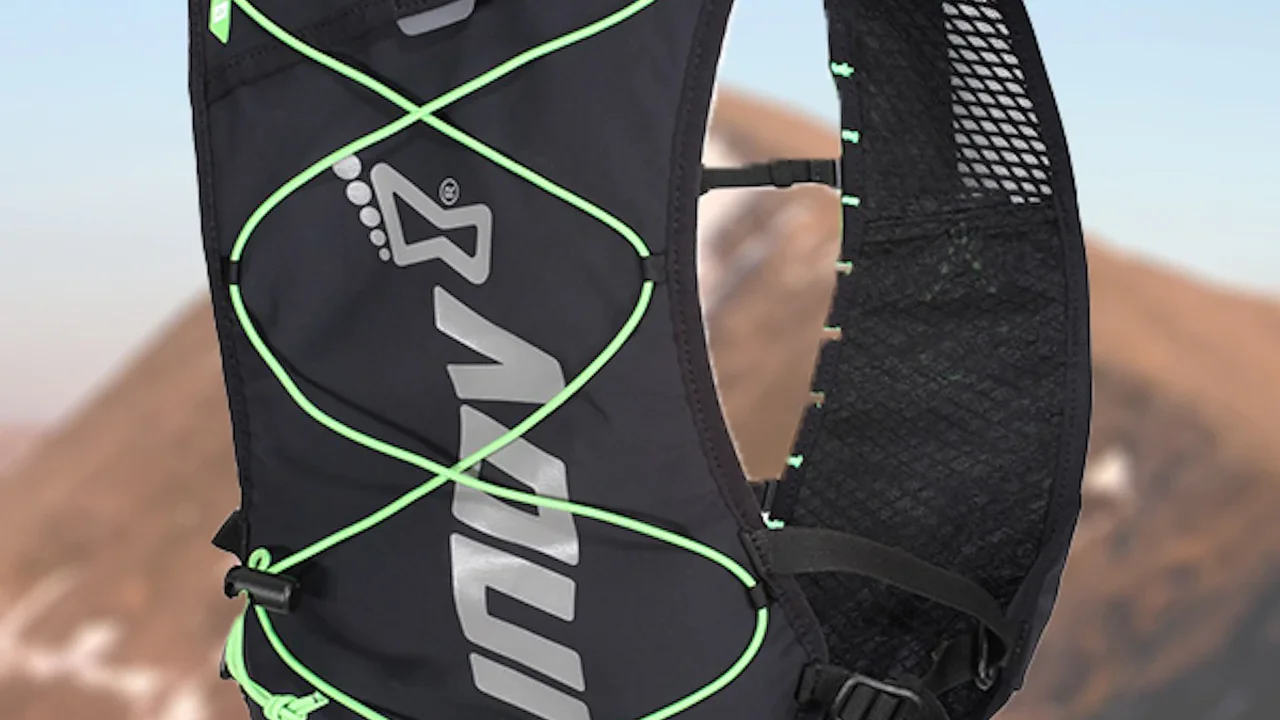The 4 Best Portable Power Banks for Outdoor Use
Keep your devices charged with the 4 best portable power banks for outdoor use. Capacity, charging speed, and ruggedness compared.

Keep your devices charged with the 4 best portable power banks for outdoor use. Capacity, charging speed, and ruggedness compared.
The 4 Best Portable Power Banks for Outdoor Use
Hey there, fellow adventurers! Ever found yourself deep in the wilderness, miles from the nearest outlet, only to realize your phone is at 5%? Or maybe your GPS device is about to die, and you're not quite sure which way is north anymore? Yeah, we've all been there. In today's world, even when we're trying to disconnect and enjoy nature, our electronic gadgets often play a crucial role in safety, navigation, communication, and even capturing those epic moments. That's where a reliable portable power bank comes in. It's not just a convenience; it's an essential piece of gear for any serious outdoor enthusiast.
But with so many options out there, how do you pick the right one? You need something that's not only powerful enough to charge your devices multiple times but also durable enough to withstand the rigors of the outdoors. Think about it: dust, water, drops, extreme temperatures – your power bank needs to handle it all. In this guide, we're going to dive deep into what makes a great outdoor power bank, compare some of the top contenders, and help you choose the perfect one for your next adventure. We'll look at capacity, charging speed, ruggedness, and even some cool extra features that can make your outdoor life a whole lot easier.
Understanding Portable Power Bank Essentials for Outdoor Adventures
Before we jump into specific products, let's break down some key terms and features you'll encounter when shopping for a portable power bank. Knowing these will help you make an informed decision tailored to your specific needs.
Capacity What mAh Means for Your Devices
Capacity is probably the most important factor, measured in milliampere-hours (mAh). Simply put, the higher the mAh, the more charge the power bank can hold, and the more times it can charge your devices. A typical smartphone battery is around 3,000-4,000 mAh. So, a 10,000 mAh power bank could charge your phone roughly 2-3 times. For longer trips or multiple devices, you'll want a higher capacity, perhaps 20,000 mAh or even 30,000 mAh. Keep in mind that higher capacity usually means a larger and heavier power bank, so it's a trade-off between power and portability.
Charging Speed USB A USB C and Quick Charge Technology
Nobody wants to wait hours for their phone to charge, especially when you're on the go. Charging speed is determined by the output current (measured in Amperes, A) and voltage (V). Most modern power banks offer at least 2.1A output, which is decent. However, look for power banks with Quick Charge (QC) or Power Delivery (PD) technology. USB-C PD is particularly important if you plan to charge larger devices like tablets or even some laptops, as it can deliver much higher wattage. A power bank with both USB-A and USB-C ports offers great versatility.
Durability and Ruggedness IP Ratings and Drop Protection
This is where outdoor-specific power banks really shine. Unlike your everyday commuter power bank, an outdoor model needs to withstand the elements. Look for an IP (Ingress Protection) rating, which indicates its resistance to dust and water. For example, IP67 means it's dust-tight and can be submerged in up to 1 meter of water for 30 minutes. Drop protection, often achieved through reinforced casings and rubberized exteriors, is also crucial. You don't want your power source to shatter if it takes a tumble down a rocky trail.
Portability Size Weight and Attachment Options
While capacity is important, you also need to consider how easily you can carry it. A massive 50,000 mAh power bank might be great for a basecamp, but not so much for a fast-and-light backpacking trip. Look at the dimensions and weight. Some power banks also come with carabiner clips or loops, making it easy to attach them to your backpack for convenient access or even for solar charging on the go.
Extra Features Flashlights Solar Panels and Wireless Charging
Many outdoor power banks come with additional features that can be incredibly useful. A built-in LED flashlight can be a lifesaver in a pinch. Some even integrate small solar panels, offering a trickle charge when exposed to sunlight – great for extending battery life on multi-day trips, though don't expect them to fully recharge a large power bank quickly. Wireless charging (Qi-compatible) is a nice convenience if your devices support it, reducing the need for extra cables.
Top 4 Portable Power Banks for Outdoor Use A Detailed Comparison
Alright, let's get to the good stuff! Here are our top picks for portable power banks designed for the great outdoors, complete with their pros, cons, and ideal use cases.
1. Goal Zero Venture 75 Power Bank The Rugged All-Rounder
Overview: Goal Zero is a well-respected name in outdoor power solutions, and the Venture 75 lives up to that reputation. It's built like a tank, designed to handle whatever Mother Nature throws at it, and offers a solid balance of capacity and portability.
Key Features:
- Capacity: 19,200 mAh (75 Wh) – enough to charge most smartphones 5-6 times, or a tablet 2-3 times.
- Output: Dual USB-C PD (60W max) and USB-A (QC 3.0, 18W max). This means fast charging for a wide range of devices, including some smaller laptops.
- Ruggedness: IP67 rated, making it completely dustproof and waterproof up to 1 meter for 30 minutes. It also has a durable rubberized casing for drop protection.
- Portability: Weighs about 1.1 lbs (500g) and is relatively compact (6.1 x 3.8 x 1.1 inches). It feels substantial but fits well in a backpack.
- Extra Features: Integrated 50-lumen flashlight, and it's designed to pair seamlessly with Goal Zero's Nomad series solar panels for off-grid recharging.
Ideal Use Case: Backpacking, multi-day hiking, kayaking, camping, or any adventure where you need reliable power and robust protection from the elements. It's perfect for charging phones, GPS devices, headlamps, and even small drones or cameras.
Pros: Extremely durable and waterproof, fast charging with USB-C PD, good capacity for its size, integrated flashlight, excellent ecosystem with Goal Zero solar panels.
Cons: A bit pricier than some competitors, no wireless charging.
Estimated Price: Around $120 - $150 USD.
2. Anker PowerCore Essential 20000 PD The High-Capacity Workhorse
Overview: Anker is a leader in portable charging, known for its reliable and high-performance products. While not specifically marketed as 'rugged,' the PowerCore Essential 20000 PD offers massive capacity and fast charging in a surprisingly compact form factor, making it a favorite for longer trips where you prioritize power over extreme ruggedness.
Key Features:
- Capacity: 20,000 mAh – provides multiple charges for phones (4-5 times), tablets (2-3 times), and even a significant boost for USB-C laptops.
- Output: One USB-C PD port (18W) and one USB-A port (18W with Anker's PowerIQ 2.0). While not as high wattage as the Venture 75's 60W PD, 18W is still very fast for most smartphones and tablets.
- Ruggedness: No official IP rating, but it has a durable matte finish that resists fingerprints and minor scratches. It's not designed for submersion but can handle light splashes and general outdoor wear and tear if kept protected in a bag.
- Portability: Weighs about 0.75 lbs (345g) and is quite slim (6.2 x 2.9 x 0.8 inches), making it easy to slip into a backpack pocket.
- Extra Features: Trickle-charging mode for low-power devices like Bluetooth headphones or smartwatches.
Ideal Use Case: Extended camping trips, long-haul flights, road trips, or any scenario where you need a lot of power for multiple devices over several days. It's a great choice if you're careful with your gear and don't anticipate extreme wet conditions.
Pros: Excellent capacity for its price and size, very fast charging for most personal electronics, relatively lightweight and compact, reliable Anker quality.
Cons: Not officially waterproof or dustproof, no integrated flashlight or solar charging capability.
Estimated Price: Around $60 - $80 USD.
3. BioLite Charge 80 PD The Eco-Conscious and Durable Choice
Overview: BioLite is known for its innovative outdoor gear that often incorporates sustainable energy solutions. The Charge 80 PD is a robust power bank designed with outdoor use in mind, offering a good balance of power, durability, and thoughtful design.
Key Features:
- Capacity: 20,000 mAh (74 Wh) – similar to the Anker, providing ample power for multiple charges.
- Output: One USB-C PD port (18W) and two USB-A ports (15W total). This allows for charging up to three devices simultaneously.
- Ruggedness: IPX6 rated, meaning it can withstand powerful water jets (like heavy rain or splashes) but not submersion. It has a durable, impact-resistant casing.
- Portability: Weighs about 1.1 lbs (500g) and is a bit thicker than the Anker (6.0 x 3.2 x 1.0 inches), but still very manageable for backpacking.
- Extra Features: Pass-through charging (charge the power bank while it charges your devices), and a unique 'shake-to-wake' feature to check battery levels.
Ideal Use Case: Backpacking, camping, fishing, or any activity where you might encounter rain or splashes. It's a solid choice for those who appreciate thoughtful design and a good balance of features.
Pros: Good water resistance (IPX6), multiple output ports for simultaneous charging, pass-through charging, reliable brand for outdoor gear.
Cons: No integrated flashlight, USB-C PD is 18W, not as high as some premium options.
Estimated Price: Around $80 - $100 USD.
4. Nitecore NPB4 The Extreme Adventure Power Solution
Overview: Nitecore is renowned for its high-performance flashlights and charging solutions, often catering to tactical and extreme outdoor users. The NPB4 is a beast of a power bank, designed for the most demanding environments, offering extreme ruggedness and impressive capacity.
Key Features:
- Capacity: 20,000 mAh (74 Wh) – plenty of power for extended trips.
- Output: One USB-C PD port (18W) and two USB-A ports (18W total).
- Ruggedness: IP68 rated, meaning it's completely dustproof and waterproof up to 2 meters for 30 minutes. It's also designed to be impact-resistant and can withstand extreme temperatures (-10°C to 40°C). This is one of the most rugged power banks on the market.
- Portability: Weighs about 1.1 lbs (500g) and is relatively compact for its ruggedness (4.0 x 2.0 x 1.7 inches). Its cylindrical shape makes it easy to grip.
- Extra Features: Built-in power indicator, and it uses high-quality 21700 Li-ion batteries for stable and efficient power delivery.
Ideal Use Case: Mountaineering, extreme expeditions, military applications, or anyone who needs the absolute toughest and most reliable power bank available, regardless of the conditions. If you're going somewhere truly remote and unforgiving, this is your pick.
Pros: Unmatched IP68 waterproof and dustproof rating, extreme temperature resistance, very durable construction, reliable Nitecore quality.
Cons: Higher price point, no integrated flashlight or solar charging, USB-C PD is 18W.
Estimated Price: Around $100 - $130 USD.
Choosing Your Perfect Outdoor Power Bank Considerations and Scenarios
Now that you've seen some of the best options, let's talk about how to narrow down your choice based on your specific adventure style and needs.
Short Day Hikes and Weekend Trips
For shorter outings where you just need to top off your phone or GPS once or twice, a smaller, lighter power bank around 10,000 mAh might suffice. The Anker PowerCore Essential 20000 PD, while higher capacity, is still very portable and offers peace of mind. If you anticipate light rain, any of the IP-rated options like the Goal Zero Venture 75 or BioLite Charge 80 PD would be excellent.
Multi-Day Backpacking and Camping
This is where capacity becomes king. You'll likely be charging multiple devices (phone, headlamp, GPS, camera) over several days. A 20,000 mAh power bank like the Anker PowerCore Essential 20000 PD, BioLite Charge 80 PD, or Nitecore NPB4 is ideal. If you're going to be exposed to the elements, the IP-rated options from Goal Zero, BioLite, or Nitecore are highly recommended. Consider pairing with a small solar panel for extended trips.
Water Sports Kayaking Rafting and Fishing
If your adventures involve water, an IP-rated power bank is non-negotiable. The Goal Zero Venture 75 (IP67) and Nitecore NPB4 (IP68) are excellent choices as they can withstand submersion. The BioLite Charge 80 PD (IPX6) is also a strong contender for heavy splashes and rain. You absolutely do not want your power source to fail when you're out on the water.
Extreme Expeditions and Remote Locations
For mountaineering, arctic expeditions, or desert crossings, you need the most robust and reliable power bank available. The Nitecore NPB4, with its IP68 rating and extreme temperature resistance, is built for these conditions. Its ability to withstand significant abuse and maintain performance in harsh environments makes it worth the investment for serious adventurers.
Budget Friendly Options
If you're on a tighter budget, the Anker PowerCore Essential 20000 PD offers incredible value for its capacity and charging speed. While it lacks official ruggedness ratings, its general durability is good, and it can be protected with a dry bag or waterproof case if needed. You'll get a lot of power without breaking the bank.
Tips for Maximizing Your Power Bank's Lifespan and Performance
Getting the right power bank is only half the battle. Here are some tips to ensure it serves you well for many adventures to come:
Charge It Regularly
Even if you're not using it, charge your power bank every 3-6 months to keep the battery healthy. Lithium-ion batteries prefer to be stored with some charge, ideally around 50-80%.
Use Quality Cables
Cheap, flimsy cables can hinder charging speed and even damage your devices or the power bank. Invest in good quality, durable cables, especially for outdoor use.
Avoid Extreme Temperatures
While some power banks are rated for extreme temperatures, prolonged exposure to very hot or very cold conditions can degrade battery performance and lifespan. Try to keep your power bank in a moderate temperature range when possible, perhaps inside your sleeping bag on cold nights.
Keep Ports Clean and Dry
Even on IP-rated devices, it's good practice to keep the charging ports free of dirt, dust, and moisture. Use the rubber flaps or covers if your power bank has them.
Don't Overcharge or Over-Discharge
Most modern power banks have built-in protection against overcharging and over-discharging, but it's still good practice to unplug them once fully charged and recharge them before they're completely drained.
Consider a Protective Case
If your chosen power bank doesn't have a high IP rating, or even if it does, a small waterproof dry bag or a padded case can add an extra layer of protection against impacts, dust, and water.
Having a reliable portable power bank is a game-changer for outdoor enthusiasts. It provides the freedom to stay connected, navigate safely, and capture memories without the constant worry of a dead battery. By considering capacity, charging speed, ruggedness, and your specific adventure needs, you can choose the perfect power bank to keep your devices juiced up, no matter how far off the grid you go. Happy adventuring!
:max_bytes(150000):strip_icc()/277019-baked-pork-chops-with-cream-of-mushroom-soup-DDMFS-beauty-4x3-BG-7505-5762b731cf30447d9cbbbbbf387beafa.jpg)






